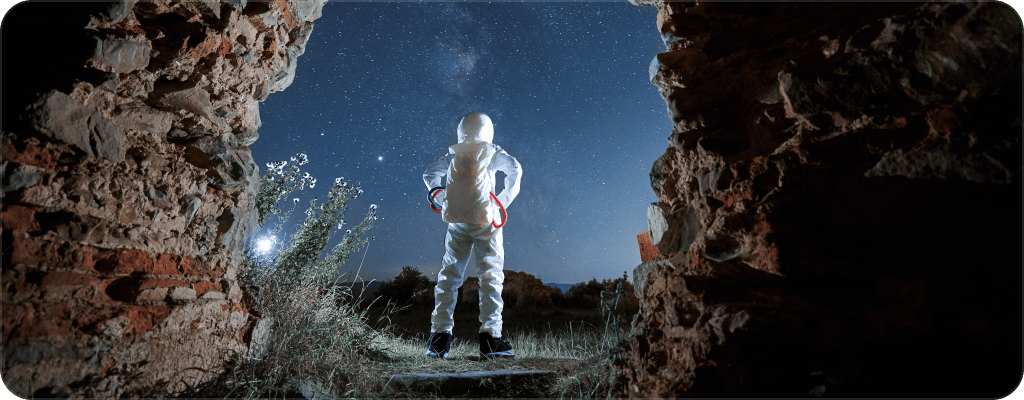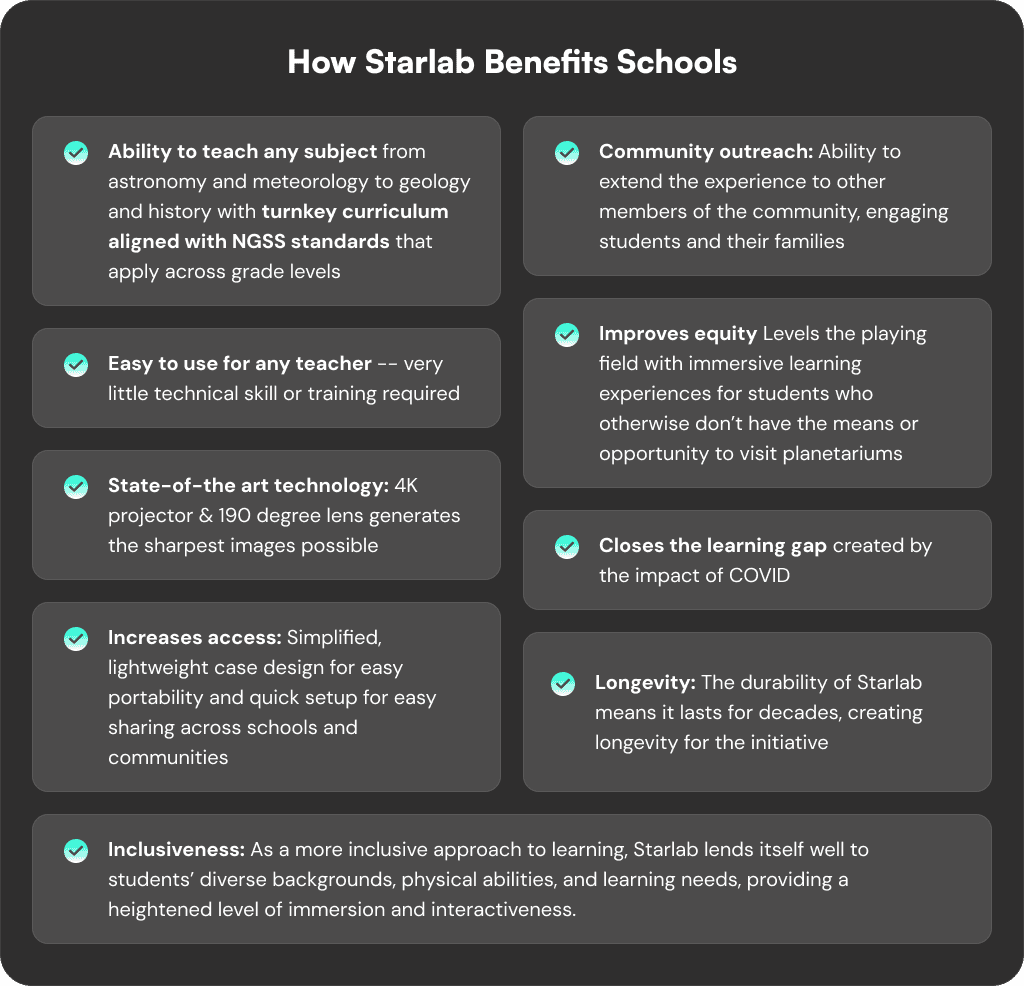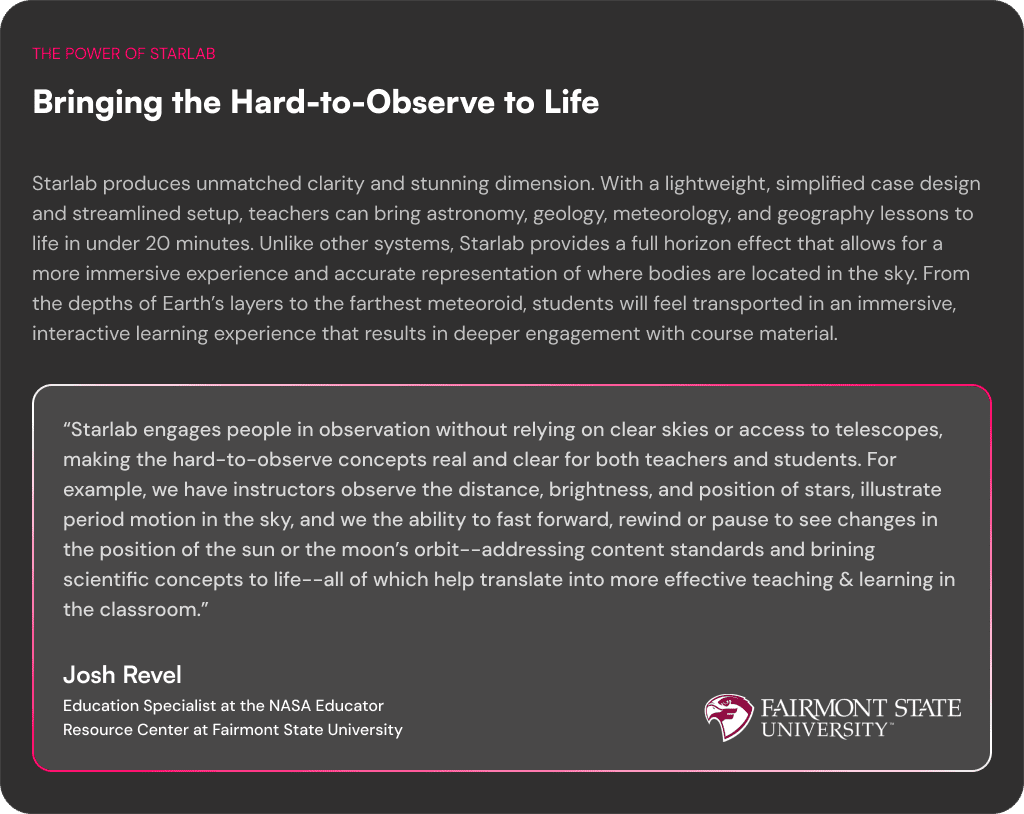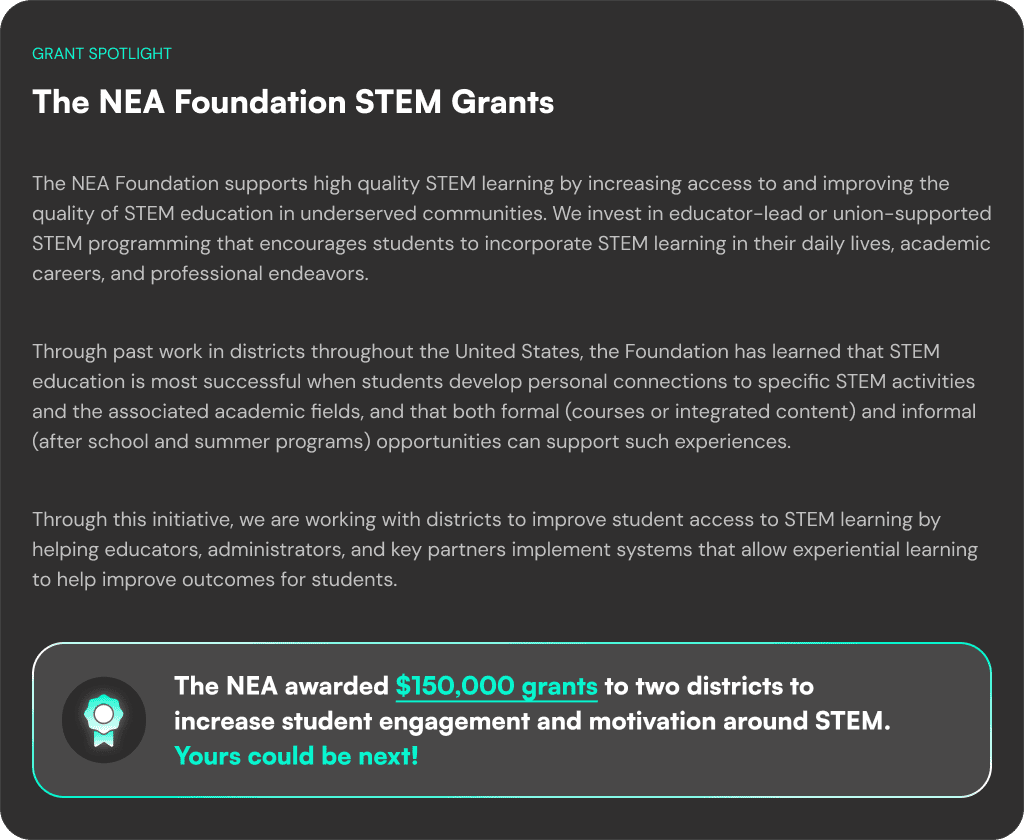
All it takes is one spark of curiosity…one moment of inspiration…one immersive learning experience to set students on a path they otherwise might not have explored.
From scientists, astronomers, geologists, and meteorologists to professors, environmentalists, and anything in between, all it takes is the right active learning opportunity to inspire a sense of awe in students. And while it doesn’t always lead to future scientists, it almost always results in students who become adults empowered with the scientific literacy skills to understand and respect the world around them.
And when you consider the loss of learning students suffered during the pandemic, it’s crucial to find ways to re-engage students in new ways that can accelerate learning. Research out of Brown University shows that the cumulative impact of the COVID-19 pandemic on students’ academic achievement has been large. For example, studies found drops in students’ math scores significantly larger than the impacts from other large-scale school disruptions, such as after Hurricane Katrina. Even more concerning, test score gaps between students in low-poverty and high-poverty elementary schools grew by approximately 20%, indicating that disruptions to learning have continued to negatively impact students in underrepresented areas.
Integrating STEM initiatives, like Starlab—a portable planetarium that brings immersive learning experiences to students—into K-12 schools is essential for making up ground, fostering stronger student engagement and deepening students’ learning.
Using Technology to Improve Student Learning & Engagement
In fact, educational researchers recommend schools take several steps to continue rebounding from this learning loss, including expanding summer programs and implementing high-impact, high-quality initiatives throughout the year. Traditional methods—think classroom textbooks and worksheets—simply can’t do enough, fast enough.
Rather, closing the math and science education gap requires systemic efforts at all levels, and many schools need to rethink how they’re teaching science. Some promising approaches include:
- Increased funding to high-poverty school districts to improve teacher recruitment, facilities and STEM resources
- Providing ongoing professional development for teachers to strengthen their skills in teaching math and science concepts
- Partnering colleges and universities with K-12 schools to provide tutoring, mentoring and enrichment programs to inspire students
- Developing community partnerships with local businesses to provide resources, mentorship and real-world experiences for students.
- Exploring grants and funding offered by NGOs and government programs that provide grants specifically aimed at enhancing STEM education through active learning.
What’s more, recent research has demonstrated the positive effects of STEM-based active learning on students. For example, studies show that STEM-based astronomy and energy activities make students more ‘active, fun, and joyful’ while helping them better understand concepts, improve science processing skills, and develop STEM career interests. Findings also reveal that STEM activities produce positive views toward interdisciplinary education and can work to build 21st century skills, such as creativity, collaboration, critical thinking and problem solving for students.
And it doesn’t just stop with your students. Imagine a STEM initiative like Starlab that can be used to amplify these positive outcomes throughout a community. Shared across schools, districts, and local communities, Starlab increases access to an immersive learning experience that goes beyond your students.
Take the Stockton Unified School District. In addition to using it as part of classroom curriculum, Starlab serves as a central element of STEAM Fairs for their local communities, where district community members of all ages can experience Starlab. During the 15-minute Starlab experience, people are immersed in an out-of-this-world learning adventure. From experiencing an eclipse up close to seeing our return to the moon, people explore the far-away wonders of our universe right before their very eyes, expanding interest in STEAM-related subjects for all members of the community. Starlab makes peoples’ experiences of viewing the night sky, traveling through space, and learning about Earth’s processes as memorable and effective as a field trip to any big city science center or museum.
While educators see the value in integrating immersive learning experiences like this into their curriculum, funding them poses a challenge.
Making the Case for Starlab
If you ever had a Starlab-like experience as a student, then you understand the impact and value. In fact, it’s probably a core memory from your K-12 days! We know this because educators from around the world contact us every day eager to make Starlab a part of their curriculum—to give their students the same experience they had with Starlab in school. We want to help make that possible!
That’s why we’ve put together all of the key info you need to demonstrate the impact Starlab can have on learning as well as the ways you can secure funding in order to make Starlab a reality for your students.
Positive Outcomes of Starlab
More than just cutting-edge technology, Starlab is an initiative to build the scientific literacy skills students will need in the future, empower them with experiences that widen their perspective, and deepen their learning in ways that can help close learning gaps. What’s more, Starlab is an initiative that demonstrates a clear commitment to expanding programming and access to science education for all students.
Consider the experience for students in the SUSD. In an urban environment, where many Stockton schools are located, light pollution and high poverty rates prevent many students from observing the skies or traveling to locations where such observation is possible. As a result, many concepts around space and astronomy remain nebulous and hard for students to understand. For the district, this was an opportunity to address the gap by creating a more immersive learning experience that helps students engage with and understand complex subjects. SUSD used StarLab to deliver a fully immersive learning experience to more than 12,000 students, generating the sharpest images possible so students could easily visualize the details of our vast universe and more easily connect concepts from instruction to the real world.
Further, studies from the Education Commission of the States suggest that schools that strategically invest in STEM resources, like Starlab, see improved student outcomes in science and math. This research highlights several key benefits:
- Enhanced Curriculum and Instruction: Schools that integrate STEM initiatives with a focus on real-world applications and hands-on learning experiences often see increased student engagement and achievement. This includes incorporating project-based learning and providing opportunities for students to solve real-life problems through STEM subjects
- Professional Development for Teachers: Investing in science initiatives helps teachers gain the skills needed to effectively teach STEM subjects. Programs that focus on increasing teachers’ content knowledge and pedagogical skills can lead to better student performance in STEM areas. See how Fairmont State uses Starlab to support and prepare area teachers.
- Access to Resources and Technology: Providing students with access to modern technology and STEM resources can enhance learning experiences. Schools that offer updated lab equipment, computers, and software see a positive impact on students’ ability to grasp complex STEM concepts.

Starlab creates fully immersive learning experiences that deepen students’ understanding of the world around them and have the power to build growing interest in STEM-related disciplines.

5 Ways to Secure Starlab Funding
If you’re not sure where to start, then this is the perfect place for you. The following five approaches are proven methods schools and districts have used to successfully fund Starlab!
School & District Budgeting for Starlab
Ahead of the next budget cycle, consider petitioning your school or district to allocate a portion of their annual budgets to Starlab. While this approach requires careful planning and prioritization, the most critical element is ensuring your principal, superintendent and board see the full value and positive effects of STEM programming for their schools.
How to Incorporate Starlab into School Budgets:
- Needs Assessment: Conduct a needs assessment to determine the importance of Starlab for the curriculum and its potential impact on student learning.
- Cost-Benefit Analysis: Perform a cost-benefit analysis to justify the investment. Be sure to highlight the long-term educational benefits cited above and potential savings from using versatile tools like Starlab.
- Budget Allocation: Work with the school district to allocate funds from the annual budget. This may involve re-prioritizing existing resources or identifying surplus funds.
- Community Support: Engage the community and school board to gain support for the funding initiative. Present data, testimonials, and anecdotes to illustrate the positive impact of Starlab could have on schools in your district.
Starlab Grants
Grants are another high impact way to secure funding for Starlab without straining school budgets. Numerous federal, state, and private grants are available specifically for STEM education. For example, the National Science Foundation (NSF) and the U.S. Department of Education offer grants aimed at enhancing STEM programs in schools.
We compiled a comprehensive listing of public and private science-based grants here. Be sure to check your state’s department of education site for state and region-specific grants.
How to Secure Grants for Starlab:
- Research Available Grants: Identify the grants you want to target. In addition to our listing, websites like Grants.gov and the NSF’s official site are good starting points.
- Grant Writing: Develop a compelling grant proposal that outlines the need for Starlab, its expected impact, and how it aligns with the grant’s objectives. Include detailed budgets, timelines, and metrics for measuring success. Let us know if you need help!
- Collaboration: Partner with other schools or educational organizations to strengthen the grant application. Collaborative proposals often have a higher chance of success.
- Follow-Up: After securing the grant, ensure compliance with all reporting requirements and demonstrate the impact of the funding to increase the likelihood of future grants.

Further, consider reaching out to science programs at your local community colleges or universities to see if partnering up is an option. These institutions likely have more resources and could potentially support your grant efforts or could be willing to donate or partner up with your school on this kind of initiative.
Private Donations for Starlab
Private donations from individuals, businesses, and philanthropic organizations can also be a significant source of funding for Starlab. Many businesses and local community members are willing to invest in education, especially when it involves innovative technology that can have a transformative impact on students.
How to Attract Private Donations:
- Identify Potential Donors: Create a list of potential donors, including local businesses, community leaders, and alumni. Research their philanthropic interests to tailor the donation request. If your school or district has a Development department, partner with them to align on potential donors.
- Develop a Campaign: Launch a fundraising campaign highlighting the benefits of Starlab. Use compelling narratives, student testimonials, and data to showcase its potential impact.
- Engagement: Organize events, such as science fairs or open houses, where potential donors can see Starlab in action. Personal interactions can be more persuasive than written appeals.
- Recognition: Offer recognition to donors through naming opportunities, public acknowledgments, and exclusive previews of the technology. This can incentivize donations and build long-term relationships.
Parent-Teacher Association (PTA) Contributions for Starlab
The PTA is often a critical ally in funding many educational initiatives. By mobilizing parents and community members, the PTA can raise significant funds for acquiring technology like Starlab.
How to Encourage PTA Involvement:
- Proposal Presentation: Similar to your school budget proposal, present Starlab to the PTA, highlighting its educational benefits and alignment with the school’s goals.
- Fundraising Events: Encourage the PTA to organize fundraising events such as bake sales, auctions, and sponsored walks for the initiative. These events can generate funds while fostering a sense of community.
- Matching Funds: Encourage parents and local businesses to offer matching funds for donations. This can double the impact of individual contributions.
- Grant Applications: Collaborate with the PTA to apply for grants. PTAs often have access to grants that schools alone may not qualify for.
Awards & Competitions
Participating in STEM awards and competitions can provide both recognition and funding for innovative projects–and many have been able to apply their winnings to Starlab.
How to Make the Most of Awards and Competitions:
- Research Opportunities: Identify awards and competitions that offer funding for STEM initiatives. Examples include the Samsung Solve for Tomorrow contest and the Lemelson-MIT InvenTeams program. Check out more here.
- Application Process: Prepare a strong application or project proposal that highlights the innovative use of Starlab and its impact on student learning.
- Student Involvement: Involve students in the application process. This not only strengthens the proposal but also provides valuable learning experiences.
- Utilize Awards: Use the funds from awards to purchase Starlab and related resources. Additionally, leverage the recognition to attract further support from other sources.
While this is a lot to take in, funding such initiatives doesn’t have to be overwhelming. Consider forming a small committee where each member can support an area, so that a combination of budgeting, grants, private donations, PTA contributions, and awards can make it possible.
Promoting scientific literacy is more important than ever.
In the end, integrating Starlab into K-12 schools is essential if you want to inspire students, spark their curiosity, and better prepare them for the world that awaits. And while funding such initiatives can be challenging, a combination of school and district budgeting, grants, private donations, PTA contributions, and awards can make it possible. You’ll give students an experience so powerful that not only will they never forget it, you might just inspire our next wave of scientists!